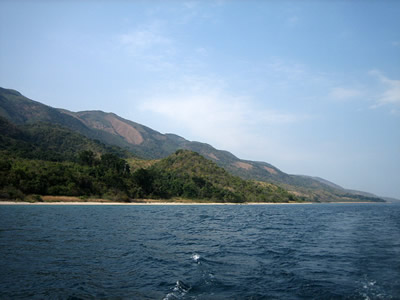The eastern shore of Lake Tanganyika, off Gombe, Tanzania.
Click on image for full size
Image Courtesy of Marc Mayes
East Africa's Lake Tanganyika is Warming More Than Ever Before
Geologists think that the waters of Lake Tanganyika, a long lake located in East Africa, has experienced a huge amount of warming in the last 100 years. Currently, the surface water of this lake is the warmest scientists have ever recorded.
This new information is important because the warm surface waters will probably affect the fish in the lake, and millions of people in that region depend on these fish to live. Lake Tanganyika is surrounded by Burundi, the Democratic Republic of Congo, Tanzania, and Zambia. These four countries are some of the poorest countries in the world. About 10 million people live near the lake and depend on it for drinking water and food.
As the climate warms, the surface of the lake gets warmer and winds on the surface aren't as strong. Winds cause water in the deep part of the lake to mix with water at the surface, bringing nutrients for fish up to the surface. When the winds aren't as strong, there isn't as much food in the durface waters for the fish population. This means the people who live near the lake may not have as much fish as they need.
Scientists are studying places like Lake Tanganyika so they can learn more about what might happen as climate warms. This information can help people make decisions about how they live in their regions.
You might also be interested in:
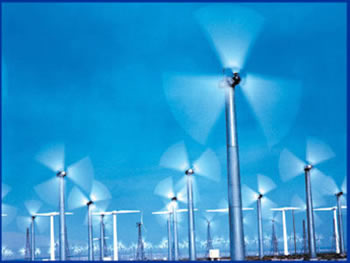
Wind is moving air. Warm air rises, and cool air comes in to take its place. This movement creates the winds around the globe. Winds move at different speeds and have different names based on their speed.
...more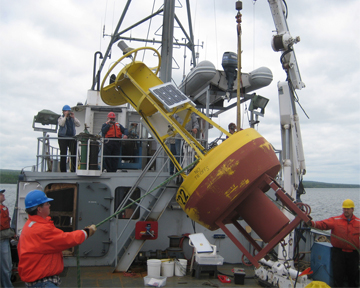
The Earth's climate is warming. That means the air is warming, the oceans are warming, and the land is warming. Did you know that lakes around the world are warming too? Scientists study lakes using satellite
...more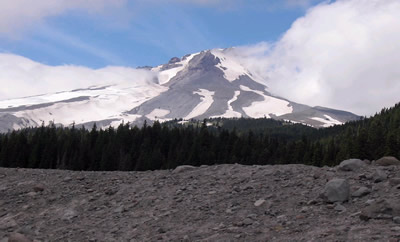
Scientists have learned that Mount Hood, Oregon's tallest mountain, has erupted in the past due to the mixing of two different types of magma. Adam Kent, a geologist at Oregon State University, says this
...more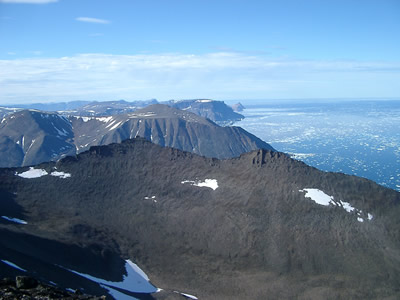
The Earth's mantle is a rocky, solid shell that is between the Earth's crust and the outer core. The mantle is made up of many different reservoirs that have different chemical compositions. Scientists
...more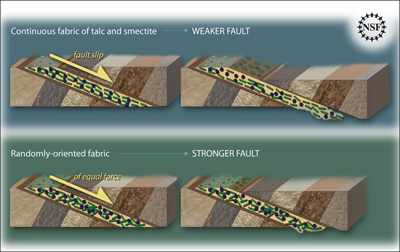
Some faults look strong and like they wouldn’t cause an earthquake. But it turns out that they can slip and slide like weak faults causing earthquakes. Scientists have been looking at one of these faults
...more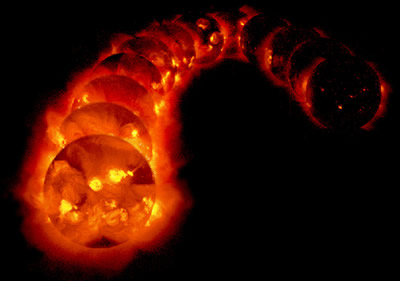
The sun goes through cycles that last approximately 11 years. These solar cycle include phases with more magnetic activity, sunspots, and solar flares. They also include phases with less activity. The
...more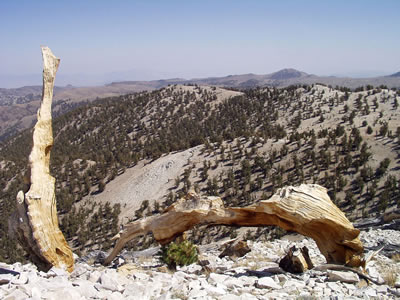
Studying tree rings doesn't only tell us the age of that tree. Tree rings also show what climate was like while the tree was alive. This means that tree rings can tell us about climates of the past. Two
...more


